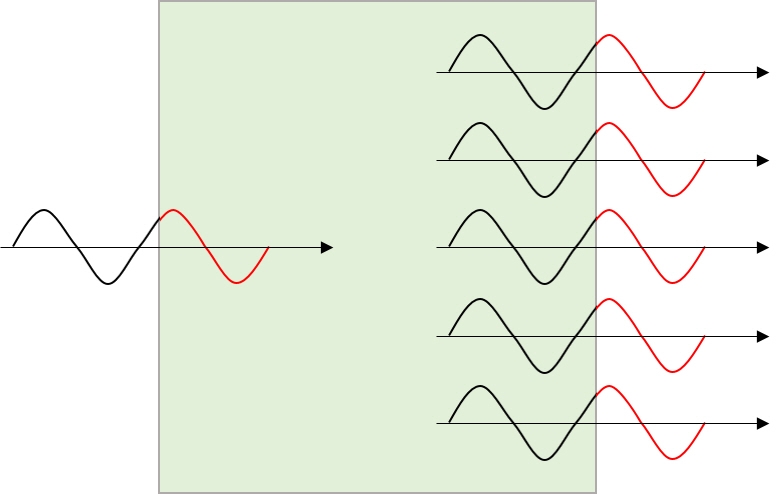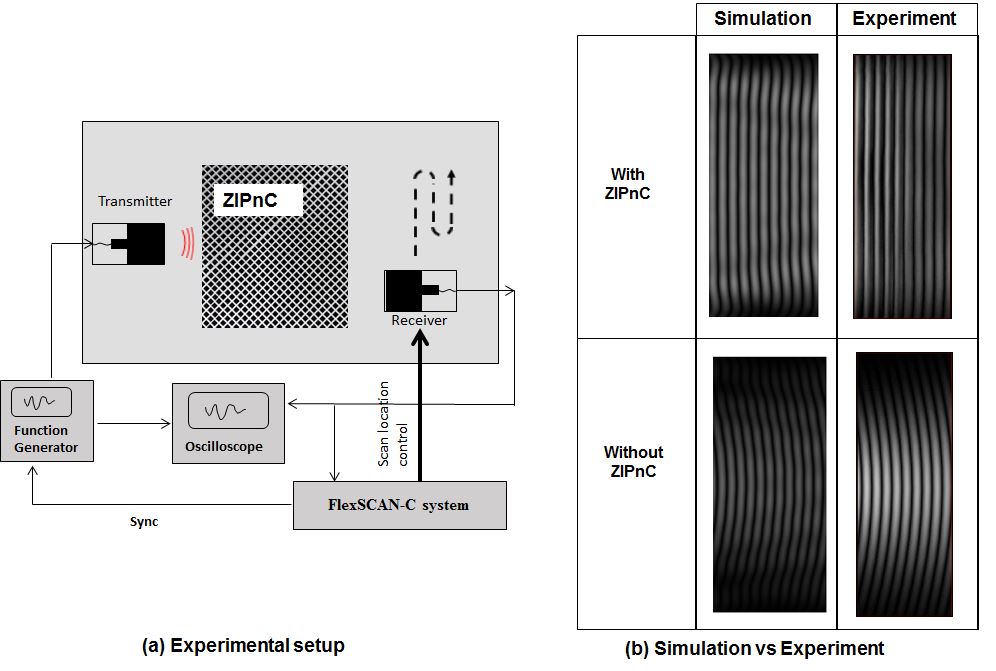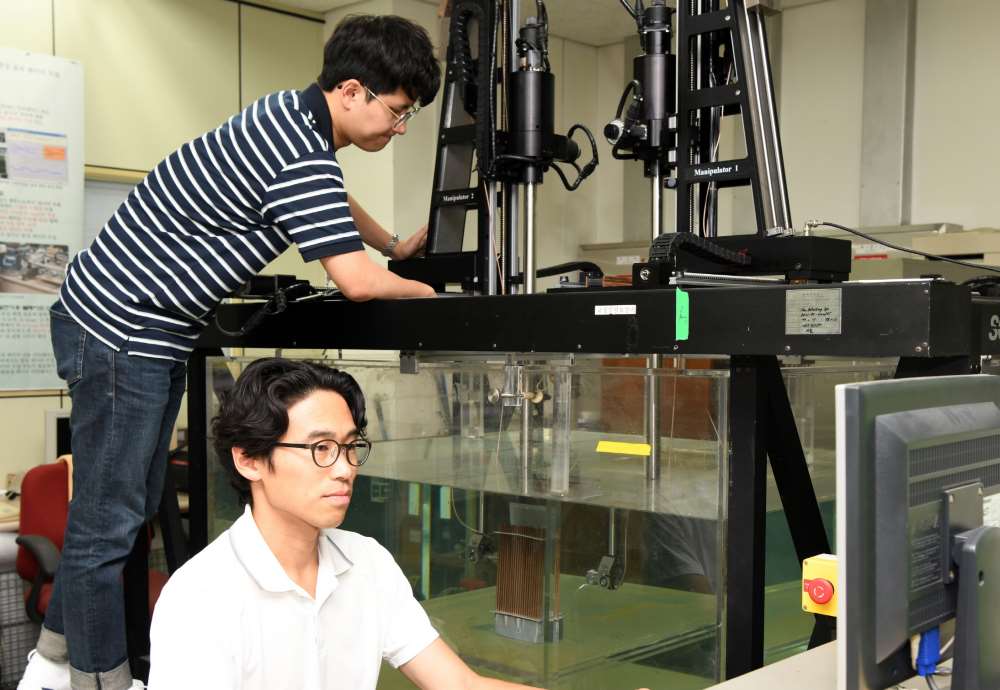
News & Updates
Underwater Stealth technology becomes possible
- Writerkrissadmin
- Date2018-06-20 00:00
- Hits18883
Underwater Stealth technology becomes possible
- Double-zero-index metamaterial passes acoustic waves without reflection -
# Underwater Objects, which cannot be reached by electromagnetic waves or radar, are detected based on reflected acoustic waves. Acoustic waves are reflected off the surface of an object. However, there is a new material that allows acoustic waves to pass through, remaining safe and undetected.
A research team composed of Wonjae Choi, a senior researcher at the Center for Safety Measurement of Korea Research Institute of Standards and Science (KRISS, President Sang-Ryoul Park) and Semyung Wang, a professor in the Department of Mechanical Engineering of Gwangju Institute of Science and Technology (GIST, President Seung Hyeon Moon), developed a double-zero-index metamaterial and successfully conducted experiments in a water tank.
Recently, matematerials have come under the spotlight as they exhibit properties that cannot be obtained by natural materials. A good example is metamaterial cloaking. Invisibility cloaks control light refracted in the positive direction, and can even achieve negative or zero refractive index.
The above can also be applied to acoustic waves. Similar to how invisibility is achieved by controlling the refraction of light, underwater stealth capabilities can be attained through acoustic waves having zero refractive index.
However, underwater acoustic waves with double-zero refractive index have only been realized in computer simulations. This is because of the hypothesis that refractive index can only be controlled when the matrix is the slowest material.
The team, composed of members of KRISS and GIST, presented results that overturn the slow material hypothesis. Double-zero-index phononic crystals were obtained through arrays of copper, which is three times faster than water with regard to transmission rate. The proposed “fast material hypothesis” is not in complete opposition to the existing hypothesis, and can be explained through the symmetry of the lattice structure. The results are expected to serve as a theoretical basis for future studies on zero refractive index.
* Phononic crystal: A periodic arrangement of a unit cell designed for the purpose of acoustic control
When an acoustic wave passes through a zero-index metamaterial, the phase at the end is the same as the phase before entering. This is why the wave appears to be continuous and undistorted. Moreover, the wave can converge or diverge depending on the end shape of the metamaterial.
Senior researcher Choi said, “By using metamaterials for the surface of submarines, we can create stealth submarines that cannot be detected using acoustic wave sensors.” Professor Wang of GIST said, “Since sound can be controlled in the desired directions, the process can be applied to not only mechanical and medical industries, but also to solve noise pollution caused by construction sites.”
Supported by the Creative Fusion Research Project of the National Research Council of Science and Technology, the study was published in the leading journal Scientific Reports (IF: 4.259) in May.
○ Research applications
1. Logistics: Stealth submarines
? Acoustic waves are used to detect the location of fish or submarines underwater. Stealth submarines, which allow acoustic waves to pass through instead of being reflected, can be designed using zero-index metamaterials.
2. Acoustics: Design of optimal sound source
? Standard sound sources, in the form of square or plane waves, are required to test acoustic systems and sensors. Ideal sound sources can be produced using zero-index metamaterials and utilized as standard sound sources.
3. Construction/machinery: Noise and vibration control
? The level of noise in buildings or machines should be minimal. Using zero-index metamaterials, noise and vibration can be diverted to other directions. Energy harvesting can be employed to capture energy while reducing vibration at the same time.

▲ Schematic of phase of plane waves
ex) When the phase of a wave entering a metamaterial is 1,
the phase when existing the end of the zero-index metamaterial is also 1.
(Wave shows no changes if there is no metamaterial)

▲ Double-zero-index metamaterial experimental setup and results.
- (a) Experimental setup (b) Simulation and experimental results with and without the metamaterial
: Plane waves having the same phase generated with metamaterial

▲ Choi (bottom) and his team conducting the double-zero-index metamaterial experiment in a water tank
QUICK MENU 원하시는 서비스를 클릭하세요!
등록된 퀵메뉴가 없습니다.
